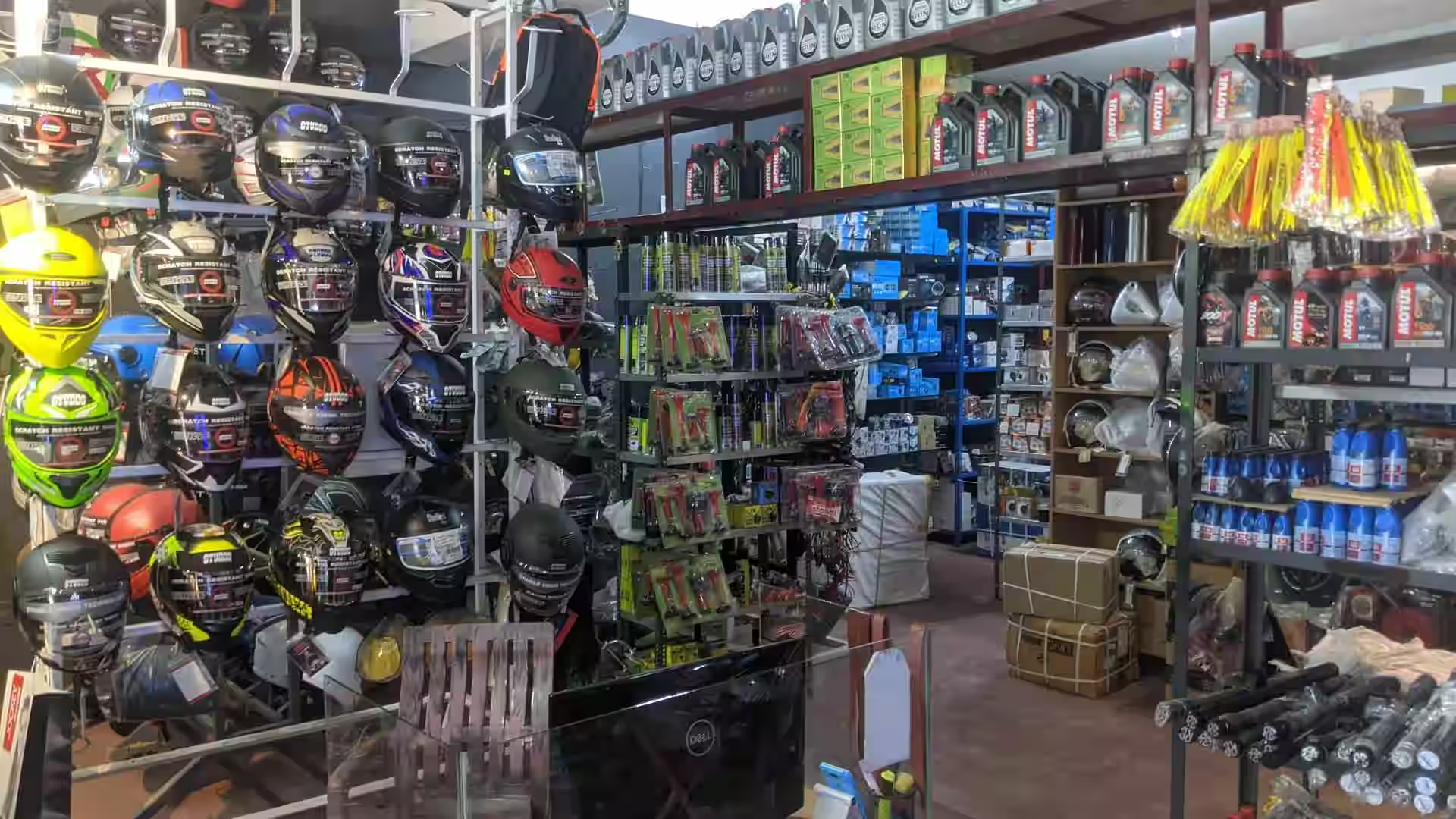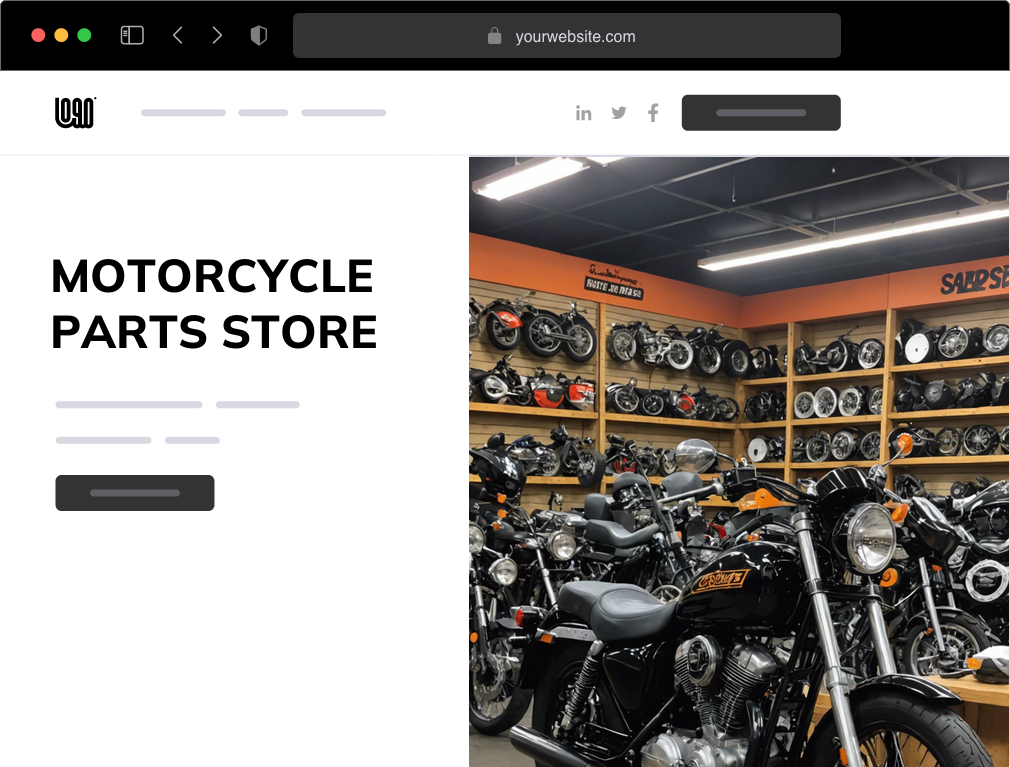Discover High Quality Moto Parts NZ for All Your Motorcycle Needs
Discover High Quality Moto Parts NZ for All Your Motorcycle Needs
Blog Article
Recognizing the Vital Parts of a Motorcycle: A Comprehensive Guide for Fanatics
For motorbike lovers looking to raise their riding experience and guarantee their bikes run efficiently, comprehending the crucial parts of a motorcycle is paramount. Each aspect, from the engine's intricate operations to the vital role of the braking mechanisms, not just affects performance however also safety and comfort.
Engine Elements

The camshaft plays a vital function in managing the timing of the engine's valves, making sure the precise opening and closing required for reliable gas and air intake, along with exhaust expulsion. This timing is critical to preserving optimum engine performance and effectiveness. Additionally, the carburetor or fuel shot system, depending on the motorbike design, is accountable for mixing air with gas in the correct ratio for combustion.
The cooling system, either air or liquid-based, functions to keep the engine's temperature level within functional limits, protecting against getting too hot and making certain durability - motocross gear. Each component, carefully created and integrated, adds to the smooth operation of the engine, defining the bike's power output and total efficiency
Transmission System
Essential to the bike's capability, the transmission system makes sure efficient power transfer from the engine to the wheels. This system consists of numerous vital components, consisting of the clutch, transmission, and final drive, each playing a vital function in converting the engine's power into activity. The clutch, generally operated by a hand lever, serves to disengage the engine and engage from the transmission, permitting smooth equipment modifications and controlled acceleration.
The transmission, often referred to as the transmission proper, consists of a collection of equipments that bikers can by hand shift via to readjust the bike's rate and torque output. These gears are set up in a series that enables the motorbike to increase efficiently and keep optimum engine performance across numerous rates. A lot of motorbikes use a consecutive gearbox, requiring the rider to shift equipments in a fixed order.
Braking Systems
While understanding the transmission system is key to harnessing a motorcycle's power, just as crucial is the ability to manage and stop that power efficiently, which is where braking systems enter play. Brakes are essential for security and performance, giving the biker with the essential control to browse various surfaces and problems. Generally, bikes include two sorts of stopping systems: disc brakes and drum brakes.
Disc brakes are more widespread in contemporary motorbikes due to their remarkable performance. They contain a brake disc, caliper, and pads. When triggered, the caliper presses the brake pads against the rotating disc, transforming kinetic energy right into heat, thereby slowing down the wheel. This system offers much better heat dissipation, regular efficiency, and enhanced stopping power, especially in wet conditions.
On the other hand, drum brakes, though less common, are still found in some motorbikes. They function by pushing brake footwear against the internal surface of a drum attached to the wheel. While generally much less effective in warmth dissipation and stopping power, drum brakes are simpler and more affordable.
Understanding these braking systems' nuances permits bikers to maintain their motorbikes appropriately and value the design that guarantees reliable and risk-free stopping.
Suspension and Steering
Suspension and guiding systems are important components that significantly affect a motorbike's handling and trip convenience. The suspension system, being composed of forks at the front and shock absorbers at the back, takes in road abnormalities, improving security and control. Front forks, upside down or generally telescopic, compress and rebound to reduce influences, while rear shock absorbers maintain tire contact with the road, important for traction and safety and security.
Guiding, centered around the handlebars, connects the motorcyclist to the motorcycle's directional control. The steering head bearings make certain smooth procedure, permitting specific ability to move. Correct alignment and maintenance of these bearings are vital for foreseeable steering action and reducing biker tiredness.
The suspension's adjustability is another vital aspect; preload, damping, and rebound setups enable personalization to fit various riding styles and conditions. This flexibility is essential for optimizing performance, whether browsing urban roads or taking on rugged tracks. Developments like digital shock absorber provide real-time adjustments, improving trip high quality across varied terrains.

Electrical Equipments
After making certain a smooth and controlled adventure via efficient suspension and steering systems, attention turns to the electrical systems, a pivotal aspect of contemporary motorcycles. These systems play a vital duty not only in beginning the engine but additionally in powering various components that enhance the capability and safety of the motorcycle.
At the heart of a bike's electric system is the battery, which shops electric energy necessary for beginning the engine and powering supporting systems - motocross gear nz. The generator or generator, paired with the rectifier-regulator, makes sure the battery continues to be charged while the motorbike is in procedure, converting power into electrical energy and keeping voltage degrees
The ignition system, another crucial part, is in charge of igniting the air-fuel blend in the engine's cylinders. Modern bikes typically make use of an electronic ignition system, providing greater efficiency and integrity compared to conventional systems.
Lighting systems, including headlights, tail lights, and indications, are additionally vital, ensuring presence and security for the motocross gear biker. Extra electronic components such as sensors, control systems, and shows add to advanced functions like gas shot administration, anti-lock braking systems (ABDOMINAL), and electronic dashboards, better boosting the riding experience.
Final Thought
A complete comprehension of a motorbike's important elements, consisting of the engine, transmission system, braking systems, suspension, steering, and electric systems, is vital for lovers aiming to optimize comfort, efficiency, and safety and security. Mastery of these components permits for educated decisions regarding upkeep and upgrades, eventually boosting the riding experience. By integrating this understanding, riders can guarantee their motorbikes run at peak effectiveness and integrity, thus maximizing both satisfaction and longevity of their cars.
For bike enthusiasts looking to elevate their riding experience and ensure their bikes run efficiently, comprehending the important parts of a bike is vital.Important to the motorbike's capability, the transmission system makes certain efficient power transfer from the engine to the wheels.While recognizing the transmission system is key to utilizing a motorcycle's power, similarly essential is the ability to control and quit that power efficiently, which is where braking systems come right into play. Usually, motorcycles include 2 kinds of stopping systems: disc brakes and drum brakes.
A comprehensive understanding of a motorbike's vital components, consisting of the engine, transmission system, braking systems, suspension, steering, and electric systems, is crucial for lovers aiming to optimize comfort, efficiency, and security.
Report this page